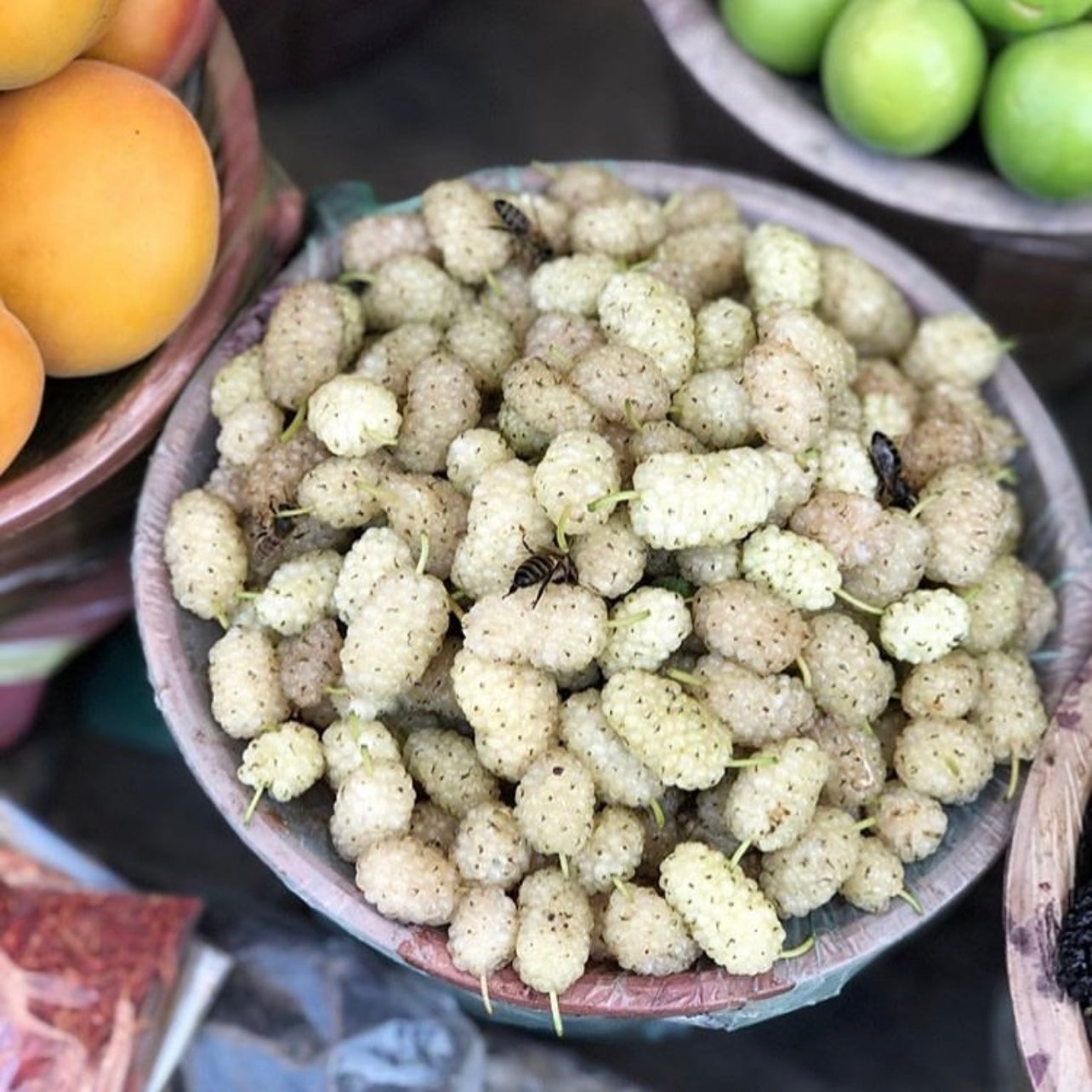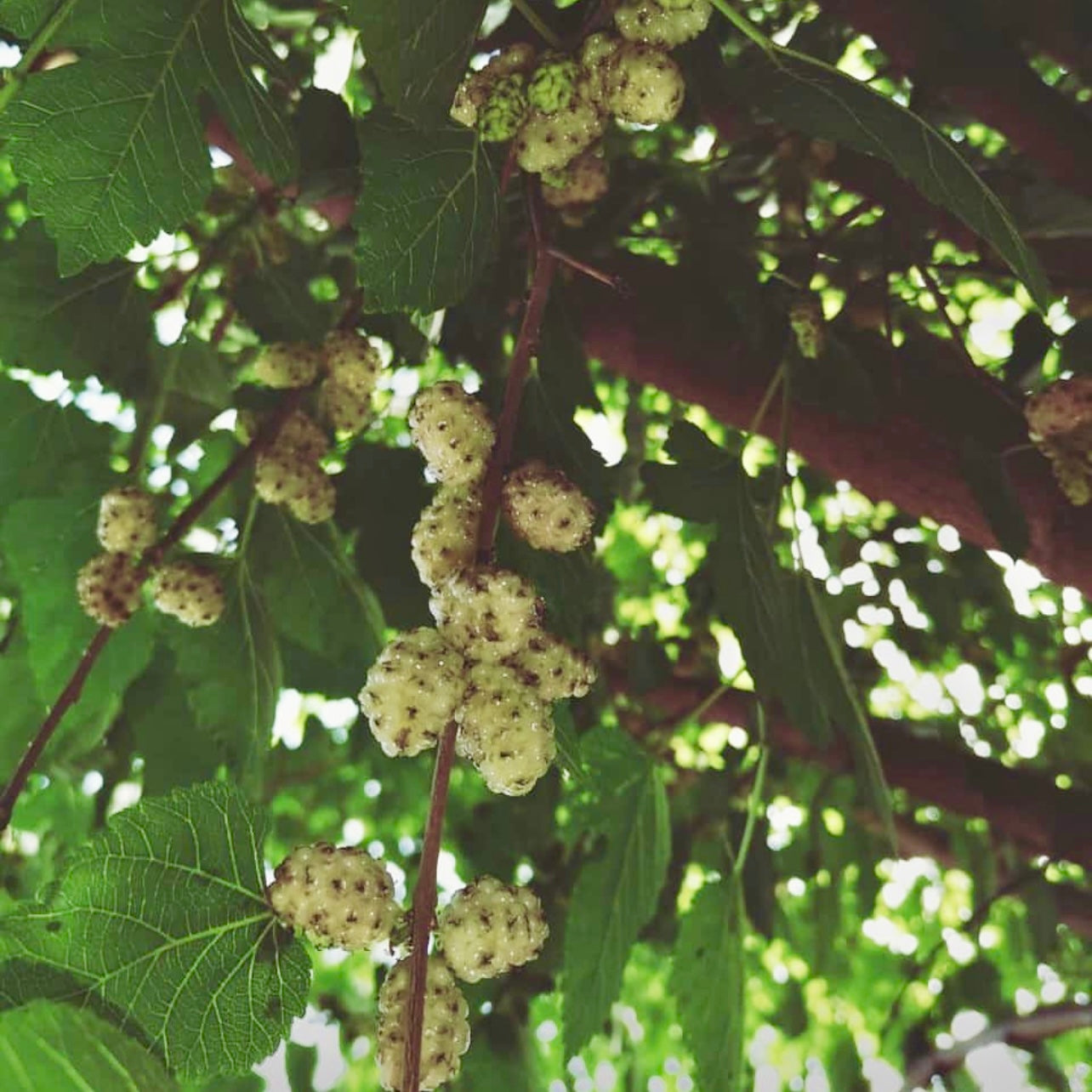Russian Mulberry (Morus alba var tartarica)
Russian Mulberry (Morus alba var tartarica)
Local Pickup Available in Harrop, BC
Couldn't load pickup availability
Why We Grow It
Why We Grow It
White Mulberries are a valuable addition to food forests and silvopasture systems, especially ones that can survive incredible cold climates. These mulberries provide high yields of nutritious fruit for humans and livestock as well as highly palatable leaves making them a candidate for "tree hay". Their continuous fruiting reduces competition with wildlife, allowing shared harvests. The trees’ ability to grow in poor soils and resist drought makes them a reliable choice for challenging environments. In permaculture designs, they support biodiversity by creating habitat, improving soil health, and offering shade to understory plants.
How the Plant Grows
How the Plant Grows
White Mulberries grow rapidly, developing a rounded crown and extensive root systems that stabilize soil and enhance water retention. In spring, they produce small, greenish flowers, which are wind-pollinated and develop into clusters of fruit. The trees continuously ripen their berries throughout summer, ensuring a prolonged harvest period. They require minimal pruning and are resilient to pests and diseases, making them low-maintenance
Plant Size
Plant Size
Size at Maturity- Sub-Canopy. Typically grows to 20-50 feet tall with a spread of 20-30 feet, though it can be pruned to a smaller size.
Current Size- -XL 3'+, 2 year old seedling
-Large 2'-3', 2 year old seedling
-Medium 1'-2', 2 year old seedling
Additional Info
Additional Info
White Mulberries have been cultivated for thousands of years, originally in China for silkworm production, as the leaves are their primary food source. Over time, the trees have spread globally due to their adaptability and valuable fruit. The berries are rich in vitamins C and K, iron, and antioxidants, making them a nutritious addition to the diet. They can be eaten fresh, dried, or processed into jams, syrups, or wines. White Mulberries are also vital for wildlife, providing food for birds and small mammals, while their fast growth and dense foliage make them an excellent windbreak or shade provider in agroforestry systems.
Russian Mulberry, often referred to as Tartarian Mulberry, is a hardy variety of Morus alba (White Mulberry) that is well-suited to harsh climates and challenging growing conditions. Originally bred for its resilience, this mulberry is widely cultivated for windbreaks, erosion control, and wildlife habitat, in addition to its edible fruit.
Share


Plant Highlights
-

Water
Moderate water needs; drought-tolerant once established but benefits from consistent moisture during establishment and fruiting.
-

Pollination
Mulberries are typically parthenocarpic meaning they can produce fruit without pollination. Sometimes trees are dioecious meaning there are distinct males that bear no fruit and females that do without the need for pollination. Though often enough trees can become dioecious meaning they have both male and female sexes on the same tree. Best to plant a few to make sure you get a fruiting tree.
-

Soil
Prefers well-drained loamy soils, but is adaptable to a variety of soil types, including poor or compacted soils.
-

Years to Bear
Produces fruit within 3-5 years of planting
-

Hardiness
Zone 3, tolerating temperatures as low as -40°C
-

Solar
Grows in full sun to partial shade, with full sun yielding the best fruit production.
Subscribe to our emails
Lots of Free Growing Info. Be the first to know about new plants and exclusive discounts.








